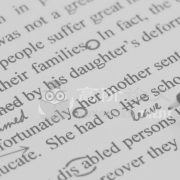報告代寫:租賃新規則
報告代寫:租賃新規則
伍爾沃斯是澳大利亞最大的消費品零售商之一,當租賃的新會計準則從AASB 117變更為當前和新的AASB 116時,伍爾沃斯受到了直接的審查和影響。這就要求零售商無論進入哪裡,都要將所有的店面租約資本化。在一個顧問委員會的指導下,該公司已經準備了相當長一段時間,該委員會建議他們逐步從簡單的租賃業務轉向將其資本化,並將其計入資產負債表。該公司目前擁有多家門店,正在從舊的標準轉向新的資本化標準。此後,約80%的門店將被納入新的資產負債表,這將改變它們從門店租賃中獲取價值的方式,現在它們將不得不將這些租賃資本化,當市場發生重大變化時,它們可能會出現資金短缺。本公司在其資產負債表中確認店鋪,但由於評估與出租人租賃店舖的利益和股權需要時間進行談判,因此仍需確定衡量標準,並應在明年公佈財務業績前完成。以下是基於AASB 116的租賃新規則:IFRS 16將不再用於經營租賃。這是規定,它保留一些根據規則的例外情況。
2. 所有租賃都應該在公司的資產負債表中資本化,根據資產負債表,他們擁有“使用權”資產,以及租賃的負債作為現值的債務(Stevenson, 2012)。 3.經營租賃的費用,不應當有直接的費用,也就是說,不應當有直接的租賃費用。所有承擔租賃義務的公司都應承擔“使用權”資產的折舊和租賃負債利息,以及承租人和出租人根據計量規則(Aasb.gov.au, 2016)對租賃價值進行計量後共同確定的切入點費用負荷。 4. 現值計算必須包括公司可能行使的期權期付款,以及被視為不可取消或基於通脹的付款。這使測量公平,並給予各方在租賃和使用儀器或零售店方面的特別支持和信心。 5. 對於像Woolworths這樣的零售公司來說,一個很好的觀點是,它們可能不計入周轉性租金或或有租金的資本化,但它們總是需要計入損益表。 6. 如果租賃類型是短期的,例如少於12個月左右,包括進一步的擴展選項,那麼他們可以選擇應用IFRS 16要求。
報告代寫:租賃新規則
Woolworths, being one of the largest consumer goods retailer in Australia, is under direct scrutiny and impact when the new accounting standards of leases have changed from AASB 117 to the current and new AASB 116. This requires the retailer to capitalise all their store leases wherever they enter into. The company has been preparing from quite a while under the guidance of a committee of advisories who advises them to make a gradual shift from the simple leases to capitalising them and including them in the balance sheets. The company currently has multiple stores that are under procession of shifting from the older standards to the new capitalisation standards. About 80% of their stores are going to be included in the new balance sheet henceforth that will change the way they derive value from the store leases, where now they will have to capitalise them and may create a financial shortage when there are major market changes. The company recognises the stores in their balance sheet, but the measurement remains to be accorded since valuing the benefits and stake in the store leases with lessors takes time for negotiations, and it shall happen by the next year financial results declaration. Following are the new rules of the AASB 116 based leases:1.IFRS 16 will no longer be used for operating leases. This is provided that it retains some according to the exceptions of the rules.
2. All leases are supposed to be capitalised in the company’s balance sheet, whereby they have the ‘right of use’ asset, along with the liability of lease as obligation of the present value (Stevenson, 2012). 3. There shall be no straightforward expenses for the costs of operating leases, meaning that there shall be no direct rental expense. All companies under lease obligations shall bear the depreciation of the ‘right of use’ asset and lease liability interest, and in addition, an entry point expense load decided mutually after measurement of the lease value by the lessee and the lessor according to the measurement rules (Aasb.gov.au, 2016). 4. The present value calculation must include the option periods payments that the company may exercise, and payments that are deemed non-cancellable or inflation based payments. This makes the measurement fair, and gives exceptional support, confidence to the parties in leasing and utilising the instrument or a retail store. 5. One good point for retail companies like Woolworths is that they may be exempted from capitalising turnover rentals or contingent rentals, but it will always be required to be included in the profit and loss statement. 6. If the lease type is short term such as less than 12 months or so including further extension options, then they may choose to apply the IFRS 16 requirements.








